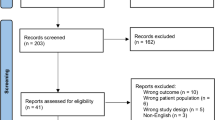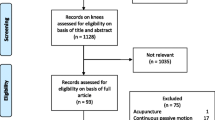Abstract
Purpose
The aim of the present study was to compare the daily activity and functionality in a patient cohort 12 months after total hip arthroplasty (THA) using a direct anterior approach with a healthy non-operated control population.
Methods
Sixty-four patients who underwent THA and 59 healthy individuals (control) were assessed regarding their daily activity and joint functionality utilizing the Harris hip score (HHS), the extra short musculoskeletal functional assessment questionnaire (XSFMA), the Short Form 36 (SF-36) health survey and a Stepwatch™ Activity Monitor (SAM). Post-operative x-ray images after THA were analysed regarding inclination and stem positioning.
Results
Twelve months after surgery, the average HHS showed no significant difference between both groups equalling 90.7 points in the THA patient group and 90.8 in the healthy volunteer group. The XSFMA functional index scores were 11.0 (THA) and 5.0 (control) while the bother index summed up to a score of 15.3 (THA) and 7.6 (control) respectively thus differing significantly (p < 0.001). Daily activity equalled 4227 (THA) and 4687 (control) load cycles per day (p = 0.327) while a number of 5658 (THA) and 6417 (control) steps per day (p = 0.011) was recorded.
The SF-36 physical component scores were 47.3 (THA) and 50.6 (control) points while the psychometric properties added up to a score of 56.1 (THA) and 55.9 (control). The physical component was determined to be significantly different (p < 0.001) whereas no statistically significant difference could be shown for the psychometric properties (p = 0.511).
The radiographic analysis revealed an average cup inclination of 39.9° without signs of migration. Stem positioning was neutral in 53% of all cases while 36% were graded varus and 11% valgus.
Conclusion
In summary, our short-term results show an activity, functionality and quality of life for patients one year after THA comparable to healthy control individuals.


Similar content being viewed by others
References
Chimento GF, Pavone V, Sharrock N, Kahn B, Cahill J, Sculco TP (2005) Minimally invasive total hip arthroplasty: a prospective randomized study. J Arthroplast 20:139–144
Goebel S, Steinert AF, Schillinger J, Eulert J, Broscheit J, Rudert M, Noth U (2012) Reduced postoperative pain in total hip arthroplasty after minimal-invasive anterior approach. Int Orthop 36:491–498. doi:10.1007/s00264-011-1280-0
Noth U, Nedopil A, Holzapfel BM, Koppmair M, Rolf O, Goebel S, Eulert J, Rudert M (2012) Minimally invasive anterior approach. Orthopade 41:390–398. doi:10.1007/s00132-011-1894-3
Rachbauer F (2005) Minimally invasive total hip arthroplasty via direct anterior approach. Orthopade 34:1103-1104, 1106-1108, 1110. doi:10.1007/s00132-005-0854-1
Reichert JC, Volkmann MR, Koppmair M, Rackwitz L, Ludemann M, Rudert M, Noth U (2015) Comparative retrospective study of the direct anterior and transgluteal approaches for primary total hip arthroplasty. Int Orthop 39:2309–2313. doi:10.1007/s00264-015-2732-8
Harris WH (1969) Traumatic arthritis of the hip after dislocation and acetabular fractures: treatment by mold arthroplasty. An end-result study using a new method of result evaluation. J Bone Joint Surg Am 51:737–755
Swiontkowski MF, Engelberg R, Martin DP, Agel J (1999) Short musculoskeletal function assessment questionnaire: validity, reliability, and responsiveness. J Bone Joint Surg Am 81:1245–1260
Garratt A, Schmidt L, Mackintosh A, Fitzpatrick R (2002) Quality of life measurement: bibliographic study of patient assessed health outcome measures. BMJ 324:1417
Johnston RC, Fitzgerald RH Jr, Harris WH, Poss R, Muller ME, Sledge CB (1990) Clinical and radiographic evaluation of total hip replacement. A standard system of terminology for reporting results. J Bone Joint Surg Am 72:161–168
Shepherd EF, Toloza E, McClung CD, Schmalzried TP (1999) Step activity monitor: increased accuracy in quantifying ambulatory activity. J Orthop Res 17:703–708. doi:10.1002/jor.1100170512
Wollmerstedt N, Noth U, Ince A, Ackermann H, Martell JM, Hendrich C (2010) The daily activity questionnaire: a novel questionnaire to assess patient activity after total hip arthroplasty. J Arthroplast 25:475-480–e471-473. doi:10.1016/j.arth.2009.01.005
Naal FD, Impellizzeri FM (2010) How active are patients undergoing total joint arthroplasty?: a systematic review. Clin Orthop Relat Res 468:1891–1904. doi:10.1007/s11999-009-1135-9
Kinkel S, Wollmerstedt N, Kleinhans JA, Hendrich C, Heisel C (2009) Patient activity after total hip arthroplasty declines with advancing age. Clin Orthop Relat Res 467:2053–2058. doi:10.1007/s11999-009-0756-3
Silva M, McClung CD, Dela Rosa MA, Dorey FJ, Schmalzried TP (2005) Activity sampling in the assessment of patients with total joint arthroplasty. J Arthroplast 20:487–491. doi:10.1016/j.arth.2004.08.013
Nilsdotter AK, Lohmander LS (2002) Age and waiting time as predictors of outcome after total hip replacement for osteoarthritis. Rheumatology (Oxford) 41:1261–1267
Talis VL, Grishin AA, Solopova IA, Oskanyan TL, Belenky VE, Ivanenko YP (2008) Asymmetric leg loading during sit-to-stand, walking and quiet standing in patients after unilateral total hip replacement surgery. Clin Biomech (Bristol, Avon) 23:424–433. doi:10.1016/j.clinbiomech.2007.11.010
Laffosse JM, Chiron P, Molinier F, Bensafi H, Puget J (2007) Prospective and comparative study of the anterolateral mini-invasive approach versus minimally invasive posterior approach for primary total hip replacement. Early results. Int Orthop 31:597–603. doi:10.1007/s00264-006-0247-z
Wollmerstedt N, Faller H, Ackermann H, Schneider J, Glatzel M, Kirschner S, Konig A (2006) Evaluation of the extra short musculoskeletal function assessment questionnaire XSMFA-D in patients with musculoskeletal disorders and surgical or medical in-patient treatment. Rehabilitation (Stuttg) 45:78–87. doi:10.1055/s-2005-915337
Sander K, Layher F, Babisch J, Roth A (2011) Evaluation of results after total hip replacement using a minimally invasive and a conventional approach. Clinical scores and gait analysis. Z Orthop Unfall 149:191–199. doi:10.1055/s-0030-1250590
Ludemann M, Kreutner J, Haddad D, Kenn W, Rudert M, Noth U (2012) MRI-based measurement of muscle damage after minimally invasive hip arthroplasty. Orthopade 41:346–353. doi:10.1007/s00132-011-1889-0
Khan RJ, Fick D, Khoo P, Yao F, Nivbrant B, Wood D (2006) Less invasive total hip arthroplasty: description of a new technique. J Arthroplast 21:1038–1046. doi:10.1016/j.arth.2006.01.010
Wollmerstedt N, Noth U, Mahlmeister F, Lotze A, Finn A, Eulert J, Hendrich C (2006) A novel questionnaire to assess activity in patients after hip arthroplasties. Orthopade 35:1237–1245. doi:10.1007/s00132-006-1010-2
Matta JM, Shahrdar C, Ferguson T (2005) Single-incision anterior approach for total hip arthroplasty on an orthopaedic table. Clin Orthop Relat Res 441:115–124
Oinuma K, Eingartner C, Saito Y, Shiratsuchi H (2007) Total hip arthroplasty by a minimally invasive, direct anterior approach. Oper Orthop Traumatol 19:310–326. doi:10.1007/s00064-007-1209-3
Nakamura S, Matsuda K, Arai N, Wakimoto N, Matsushita T (2004) Mini-incision posterior approach for total hip arthroplasty. Int Orthop 28:214–217. doi:10.1007/s00264-004-0570-1
Author information
Authors and Affiliations
Corresponding author
Ethics declarations
Conflict of interest
The authors declare that they have no conflict of interest.
Funding
There is no funding source.
Ethical approval
The study was approved by the ethics committee of the University of Würzburg.
Informed consent
Informed consent was obtained from all individual participants included in the study.
Rights and permissions
About this article
Cite this article
von Rottkay, E., Rackwitz, L., Rudert, M. et al. Function and activity after minimally invasive total hip arthroplasty compared to a healthy population. International Orthopaedics (SICOT) 42, 297–302 (2018). https://doi.org/10.1007/s00264-017-3541-z
Received:
Accepted:
Published:
Issue Date:
DOI: https://doi.org/10.1007/s00264-017-3541-z




